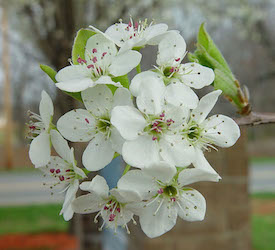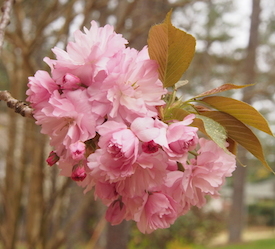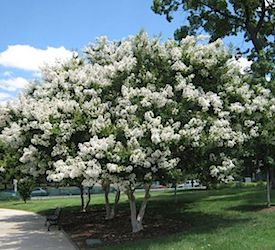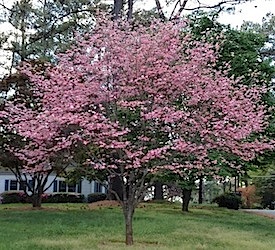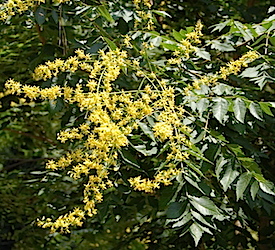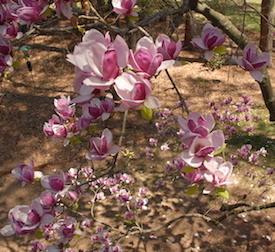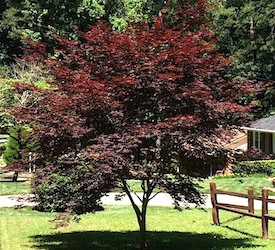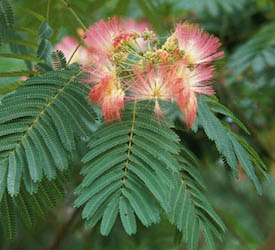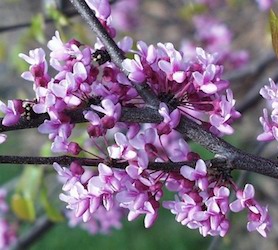Ornamentals
Click on the name of the tree below the image to see details for that species.
Ornamental trees are generally grown or engineered for their special characteristics. The most obvious of these are the widely varied colors of the leaves and flowers. However, colorful flowers and leaves aren’t the only beautiful features of ornamentals. Some ornamental trees have unusual bark, with textures ranging from paper-like peeling to odd patterns and colors. The growth patterns of the branches and twigs can be interesting, too.
Many of the ornamental trees are small in size as compared to forest trees. This allows their special features to be seen easily. Some of these trees are pruned to keep the flowers low, like crepe myrtles; others are genetically designed to be “dwarf” or miniature varieties. Some larger non-ornamental trees are intentionally planted as substitutes for ornamentals, such as some of the maples that turn brilliant colors in fall.
Ornamental trees naturally live a short life: a century-old ornamental is a rarity. Dogwoods and blooming cherries very rarely survive past fifty years. These trees appear sickly during their decline, making for sad times as they fade away.

